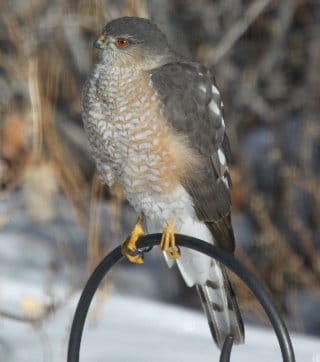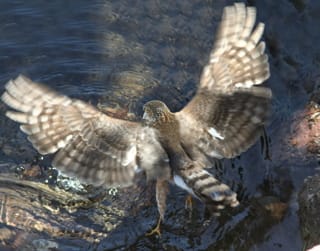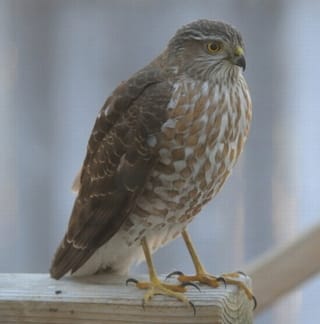Initially this guide displays common birds of all types that are flying right now in our area. Use the selectors below to view rare birds, view birds flying any time, restrict the output to a certain shape of bird, or search by name.
New Mexico is on the western edge of the Central Flyway which is one of the major migration pathways between north and south for birds traveling between breeding and wintering grounds along the Rocky Mountains. This has resulted in the state having an incredible diversity of birds with over 550 different species reported. A little more than half of this number are sighted annually on the Pajarito Plateau. Some of these birds are full-time residents, some migrate here for a few weeks or months, and other are only seen briefly as they pass through the region.
This guide features many of the birds known to frequent Los Alamos county by when they are likely to be seen in the area. You can get additional information on local birds by joining PEEC Birders or going to the eBird website. eBird also includes lists of rare bird sightings and birding hot spots.
Bird References
Birdweb
Cornell Lab of Ornithology
eBird
eNature
Institute for Bird Populations
National Audubon Society
New Mexico Ornithology Society
What Bird
xeno-canto
Subject Area Experts (all guides)
Steve Cary (butterflies)
Beth Cortright (insects)
Terry Foxx (invasive plants)
Leslie Hansen (mammals)
Richard Hansen (fish, mammals)
Dorothy Hoard (butterflies, trees)
Chick Keller (flowers, herbarium)
Shari Kelley (geology)
Kirt Kempter (geology)
Garth Tietjen (reptiles)
David Yeamans (birds)
Web Development and Content Management
Pat Bacha
Jennifer Macke
Graham Mark
Akkana Peck
Contact
Please contact us for local nature questions and sightings. We welcome comments, corrections, and additions to our guides.
For more information about local nature, please visit our Nature Blog or subscribe to PEEC This Week.
Make Selection
 Photo: adult by David Yeamans  Photo: adult by Hari Viswanthan  Photo: immature by Marion L. Stelts |  Sharp-shinned HawkSSHA (Accipiter striatus)Family: Accipitridae (Hawks and Eagles) Size: 10 - 14 in (25 - 36 cm) Flies: Jan 01 - Dec 31 Morphology: adults are dark blue-gray to brown above with horizontal red-orange bars on the breast; females are larger than males; immatures are similar to the adults but with brown vertical streaks on the breast and yellow eyes Status: native; common Food source: mostly small birds such as sparrows; rarely will eat rodents, bats, squirrels, lizards, frogs, snakes, and large insects Habitat: coniferous and deciduous woodlands with dense cover Typical location: Barranca Canyon, Deer Trap Mesa One of the smallest and most numerous of hawks, the Sharp-shinned Hawk lives in the local area year round but is most often seen when migrating populations pass overhead. It mostly hunts by perching inside foliage and waiting for smaller birds to come close. Then with a burst of speed, it will fly out and capture its prey. Sharp-shinned will target groups of smaller birds by lying in wait at backyard bird feeders. The nest is a platform of sticks lined with softer material and located in dense cover. Egg incubation time is 30 to 35 days. Females staying near the young for the first few weeks while the males bring food. The chicks will start to move around the nest tree at about 3 to 4 weeks of age and will be able to fly at 5 to 6 weeks. Info Photos Distribution Frequency |
